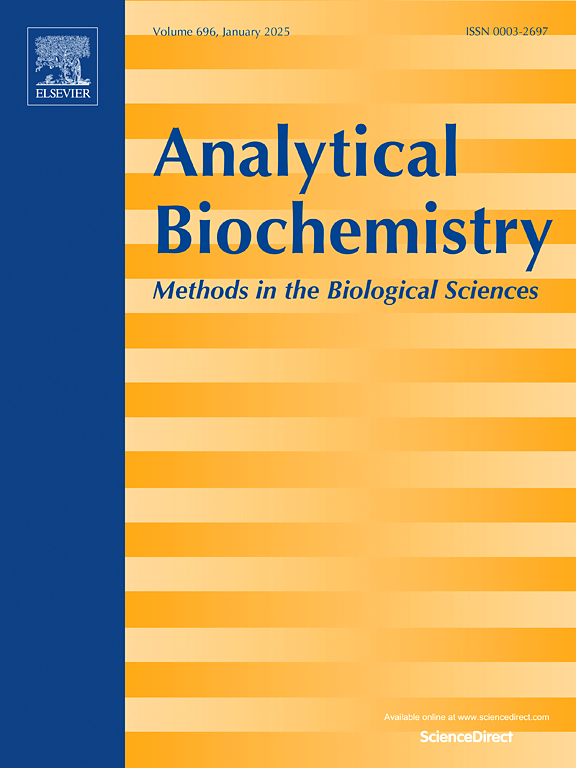一种天然1,2蒽醌——汉那色胺的质子耦合电子转移:将电化学性质与生物活性联系起来。
IF 2.5
4区 生物学
Q2 BIOCHEMICAL RESEARCH METHODS
引用次数: 0
摘要
Hallachrome是一种由海洋多毛类蠕虫分泌的1,2-蒽醌,其毒性和抗菌特性已被报道;然而,这种生物活性的起源仍然难以捉摸。伏安研究表明,在pH值1 ~ 10范围内,其氧化还原行为是可逆的,符合双电子、双质子(2e-/2H+)机制。hallachrome中的给电子取代基(羟基和甲基)稳定了质子化对苯二酚的形式,与未取代的1,2-苯醌相比,导致了0.4-0.5 V的阴极位移。电化学分析表明,从热力学角度来看,hallachrome (pH = 7时氧化还原电位-0.12 V vs. SHE)可能能够氧化关键的细胞抗氧化剂,包括NADH (-0.32 V), NADPH (-0.32 V)和谷胱甘肽(-0.24 V)。这些发现为研究醌类电化学的构效关系提供了基础,并为进一步了解hallachrome的生物活性奠定了基础。本文章由计算机程序翻译,如有差异,请以英文原文为准。

Proton-coupled electron transfer in hallachrome, a natural 1,2 anthraquinone: Linking electrochemical properties to biological activity
Hallachrome is a 1,2-anthraquinone secreted by marine polychaete worms whose toxicity and antimicrobial properties have been reported; the origin of this biological activity, however, remains elusive. Voltammetric studies reveal reversible redox behavior in the pH range 1–10, consistent with a two-electron, two-proton (2e−/2H+) mechanism. The electron-donating substituents in hallachrome (hydroxyl and methyl groups) stabilize the protonated hydroquinone form and result in a substantial cathodic shift of 0.4–0.5 V compared to unsubstituted 1,2-benzoquinone.
The electrochemical analysis reveals that hallachrome (redox potential −0.12 V vs. SHE at pH 7) might be capable, from a thermodynamic point of view, of oxidizing key cellular antioxidants, including NADH (−0.32 V), NADPH (−0.32 V), and glutathione (−0.24 V). These findings provide fundamental insights into the structure-activity relationships governing quinone electrochemistry and establish a foundation for understanding hallachrome's biological activity.
求助全文
通过发布文献求助,成功后即可免费获取论文全文。
去求助
来源期刊

Analytical biochemistry
生物-分析化学
CiteScore
5.70
自引率
0.00%
发文量
283
审稿时长
44 days
期刊介绍:
The journal''s title Analytical Biochemistry: Methods in the Biological Sciences declares its broad scope: methods for the basic biological sciences that include biochemistry, molecular genetics, cell biology, proteomics, immunology, bioinformatics and wherever the frontiers of research take the field.
The emphasis is on methods from the strictly analytical to the more preparative that would include novel approaches to protein purification as well as improvements in cell and organ culture. The actual techniques are equally inclusive ranging from aptamers to zymology.
The journal has been particularly active in:
-Analytical techniques for biological molecules-
Aptamer selection and utilization-
Biosensors-
Chromatography-
Cloning, sequencing and mutagenesis-
Electrochemical methods-
Electrophoresis-
Enzyme characterization methods-
Immunological approaches-
Mass spectrometry of proteins and nucleic acids-
Metabolomics-
Nano level techniques-
Optical spectroscopy in all its forms.
The journal is reluctant to include most drug and strictly clinical studies as there are more suitable publication platforms for these types of papers.
 求助内容:
求助内容: 应助结果提醒方式:
应助结果提醒方式:


